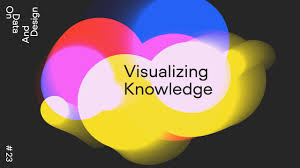The Power of Visualizing: How Mental Imagery Can Shape Your Reality
Visualizing, or creating mental imagery, is a powerful technique that can have a profound impact on your life. When you visualize, you create a detailed mental image of a desired outcome or goal. This practice is not just wishful thinking; it is a method used by athletes, performers, and successful individuals across various fields to enhance performance and achieve success.
Research has shown that visualizing can activate the same brain regions as actually performing the imagined task. By repeatedly visualizing yourself succeeding, you can build confidence, improve focus, and enhance motivation to work towards your goals.
Visualizing can also help in problem-solving and decision-making. When faced with a challenge, mentally rehearsing different scenarios and outcomes can prepare you for various situations and increase your ability to adapt and respond effectively.
Furthermore, visualizing can reduce stress and anxiety by creating a sense of calmness and control over challenging situations. By envisioning yourself overcoming obstacles and achieving success, you can cultivate a positive mindset that empowers you to face challenges with resilience.
To incorporate visualizing into your daily routine, find a quiet space where you can relax and focus. Close your eyes and vividly imagine yourself accomplishing your goals in detail – how it looks, feels, sounds, and even smells. Engage all your senses to make the experience as real as possible.
Whether you are striving for personal growth, career advancement, or improved well-being, visualizing can be a valuable tool in shaping your reality. Start harnessing the power of mental imagery today to unlock your full potential and turn your dreams into reality.
7 Essential Tips for Effective Data Visualization
- Use appropriate colors to convey meaning and evoke emotions.
- Simplify complex data by using charts and graphs.
- Ensure readability by choosing the right fonts and font sizes.
- Utilize white space effectively to reduce clutter and enhance focus.
- Maintain consistency in design elements for a cohesive visual identity.
- Consider your audience when selecting visualization types for better understanding.
- Incorporate interactive elements for engaging and dynamic visualizations.
Use appropriate colors to convey meaning and evoke emotions.
When visualizing, choosing the right colors can significantly impact the message you want to convey and the emotions you want to evoke. Colors have psychological associations that can influence mood and perception. For example, using warm colors like red and orange can convey energy, passion, and excitement, while cool colors like blue and green can evoke calmness, trust, and harmony. By selecting appropriate colors in your visualizations, you can enhance the effectiveness of your mental imagery and create a more vivid and emotionally engaging experience.
Simplify complex data by using charts and graphs.
Simplify complex data by using charts and graphs to enhance understanding and communication. Visual representations can transform intricate information into easily digestible visuals that highlight trends, patterns, and insights at a glance. By incorporating charts and graphs into your data analysis, you can streamline decision-making processes, facilitate clear communication of key findings, and engage stakeholders more effectively. Embrace the power of visualizing data to convey complex concepts with clarity and precision.
Ensure readability by choosing the right fonts and font sizes.
To enhance the effectiveness of your visualizing practice, it is crucial to ensure readability by selecting appropriate fonts and font sizes. Choosing fonts that are clear, easy to read, and visually appealing can help maintain focus and engagement during your mental imagery sessions. Opt for font styles that promote relaxation and concentration, such as sans-serif fonts like Arial or Calibri. Additionally, adjusting the font size to a comfortable level can prevent eye strain and make it easier to visualize vivid details with clarity. By paying attention to these subtle yet significant details, you can optimize your visualizing experience for maximum impact on achieving your goals.
Utilize white space effectively to reduce clutter and enhance focus.
Utilizing white space effectively is a valuable tip to reduce clutter and enhance focus in various aspects of life. Just as in design, where white space creates balance and highlights key elements, incorporating white space into your daily routines can help declutter your mind and prioritize tasks. By allowing moments of pause and reflection, you can clear mental clutter, improve concentration, and boost creativity. Embracing white space not only brings a sense of calmness but also enables you to approach challenges with clarity and intention, leading to more effective decision-making and goal achievement.
Maintain consistency in design elements for a cohesive visual identity.
Maintaining consistency in design elements is crucial for establishing a cohesive visual identity. By ensuring that colors, fonts, imagery styles, and overall design principles remain uniform across various platforms and materials, you create a sense of familiarity and professionalism that strengthens brand recognition. Consistency in design not only enhances visual appeal but also communicates a clear and unified message to your audience, reinforcing your brand’s identity and values.
Consider your audience when selecting visualization types for better understanding.
When selecting visualization types for better understanding, it is crucial to consider your audience. Different individuals may respond more effectively to certain types of visualizations based on their preferences, learning styles, and background knowledge. Tailoring your visualizations to resonate with your audience can enhance comprehension and engagement, ultimately leading to more impactful communication and shared understanding of the concepts being presented. By taking into account the characteristics and preferences of your audience, you can ensure that your visualizations effectively convey the intended message and facilitate clearer communication.
Incorporate interactive elements for engaging and dynamic visualizations.
To enhance the effectiveness of visualizing, it is beneficial to incorporate interactive elements that make the process engaging and dynamic. By adding interactive components such as mentally exploring different perspectives, adjusting scenarios based on feedback, or incorporating sensory details into your visualizations, you can deepen your connection to the imagined outcomes. These interactive elements not only make the visualization process more stimulating but also help in reinforcing positive beliefs and intentions, ultimately empowering you to manifest your goals with greater clarity and conviction.



